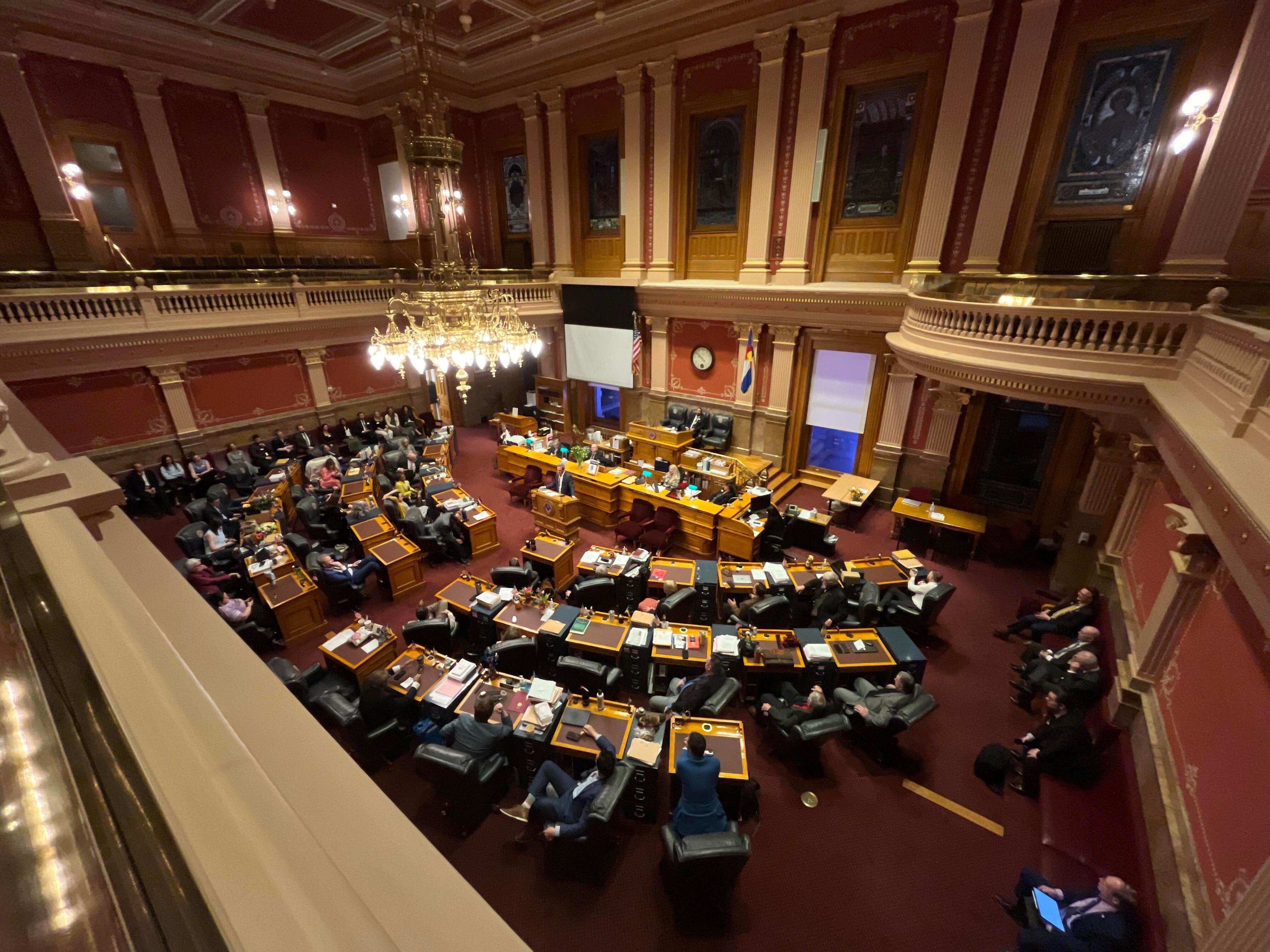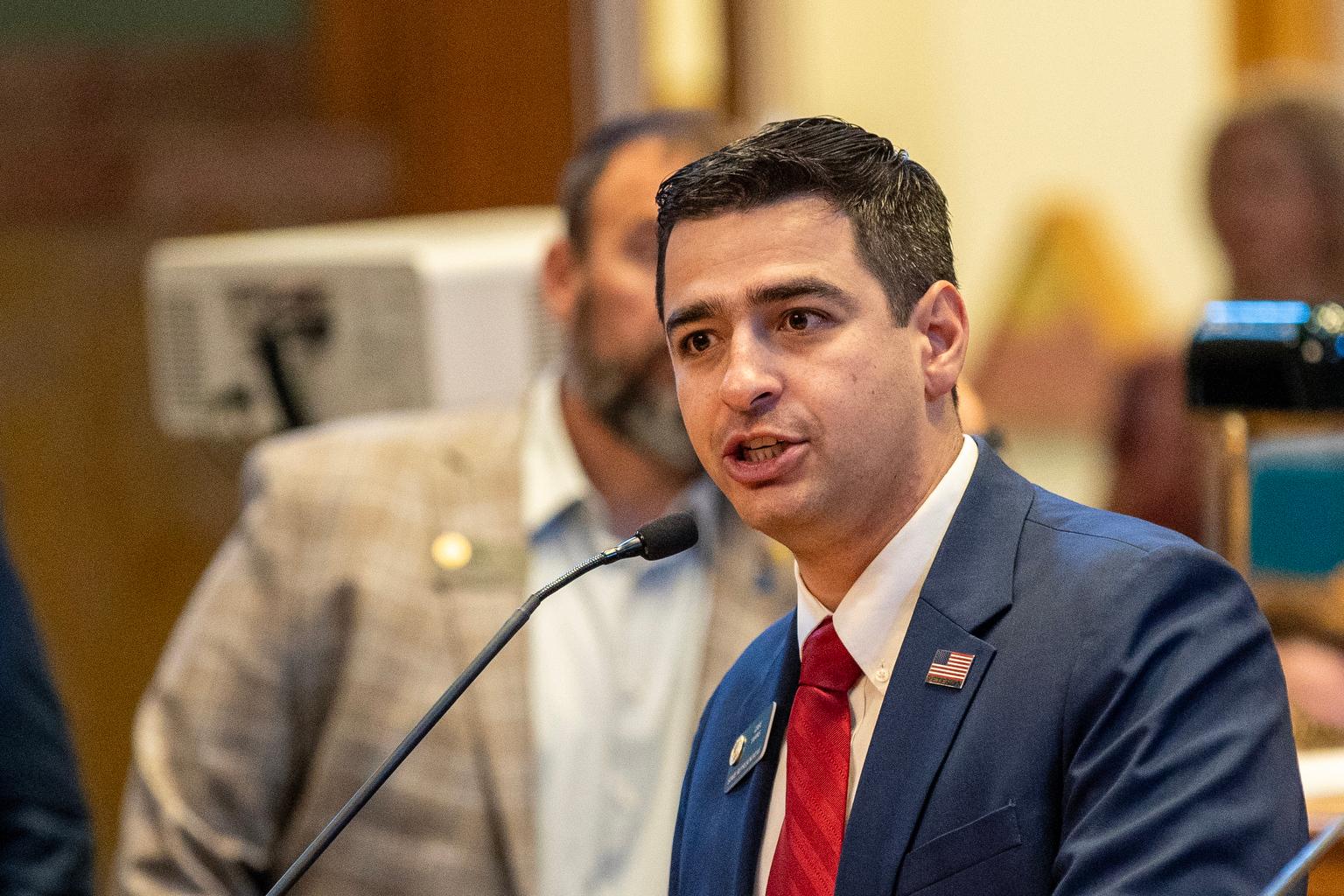
Opioids -- everything from prescription painkillers to heroin -- are killing a record number of Coloradans, as well as Americans across the country. The drugs leave many other lives in tatters. The scale of the problem has prompted Colorado lawmakers to propose a set of bills they hope may lead to better prevention and treatment for those addicted.
How Colorado Got Its Opioid Problem
Last year, about 900 people died of drug overdoses in Colorado, 64,000 across the nation. But the problem has been years in the making. This New York Times color-coded map dating back to 1999 tracks the spread of overdoses with the highest death rates in shades of red. Spots like Appalachia, the Southwest, southeast Colorado get redder and redder, meaning overdose deaths are more and more rampant.
“I don’t think you can overstate it. Pick a word, it’s as bad as you could get. More people dying every year than died in the entire Vietnam War. A 9-11 equivalent every two and a half weeks. The numbers are just mind boggling and they’re going up,” said Robert Valuck, who heads a Colorado consortium for drug abuse prevention.
Why is this happening? You have a confluence of three big trends. One is a changing attitude that started decades ago about treating pain, both for patients and medical providers. Another is the legal side of the opioid crisis: big pharmaceutical companies creating and promoting a number of painkillers, drugs that are extremely addicting. And the third is the illegal drug trade, which of course has taken off.
Treating pain: In the 1990s, a new movement emerged encouraging medical professionals to not just limit pain, but cure it. A variety of influential groups, including patient groups, even the federal government, urged doctors to do more to treat chronic pain. This coincided, around that time, with drug companies releasing powerful new drugs, prescription painkillers like Oxycontin.
“I didn't have no pain. I could actually wrestle with my kids and play,” a woman named Autumn Haggard-Wolfe told us recently. She was in recovery at a Denver drug treatment clinic and said her pain pills, prescribed after back surgery, were incredibly addicting. “Before then I couldn't do that with my kids, I would have to tell them ‘ask your dad, mommy can't do that or wrestle with whoever, mommy can't do that.’ And once I took those pills like, I was like superwoman, like I felt amazing. But then when you know I had to have more and more and more and more and more.”
Promoting drugs: There’s been a lot of reporting about drug companies using misleading marketing about the safety and potency of the drugs. Doctors started writing more pain prescriptions, often in quantities that would be regarded as way too high today.
Now the U.S. leads the world in opioid prescriptions, “a drug scourge that did not start with supply provided by drug traffickers and mafias and street gangs. But instead by doctors promoted by pharmaceutical companies,” author Sam Quinones said. We spoke with him about his book “Dreamland: The True Tale Of America’s Opiate Addiction.”
Illegal trade: For many addicted to opioids, their journey begins with prescription drugs and ends with heroin. And there’s a thriving illegal drug trade in heroin, with a lot of it now coming up through Mexico. Quinones told one story about one small town in Mexico that found a way to benefit from the flood of prescription drugs. Young men from Xalisco on the country’s west coast, started showing up in cities like Denver with cheap, potent black tar heroin. People addicted to the opioids started buying the heroin because they didn’t have to get a prescription, the drug was inexpensive. And the problem spread all over the state.
In cities like Denver, Quinones says they had something that resembled a pizza delivery system. There would be an operator and a crew in each city. Users would call in and a member of the crew would be dispatched in their car to deliver the drugs. Down in Mexico, people looking for a way make money saw a market opening. “Increasingly , as time went on, they began to see others like them come up to sell heroin, drive heroin around to a certain city… and come back with money, money enough to buy land, a house, or a truck ...money enough to interest a girl in marrying them,” Quinones said. “They were not in it to become the next Scarface, they were in it to move into the middle class.”
Now heroin is readily available. Said Haggard-Wolfe, as an example: “I don't know one person that just went straight to heroin, it's all from pain pills first, a lot of them for medical reasons, or they just wanted to get high to be honest the young kids they see all everybody else doing it, and so they did it.”
What The Legislature Is Aiming For
Here’s an overview with links to the bills that lawmakers will consider related to battling the opioid crisis in Colorado:
SB18-040: Substance Use Disorder Harm Reduction Bill allows hospitals to be used as clean syringe exchange sites, provides immunity for participants of a clean syringe exchange program, creates a supervised injection facility pilot program, allows schools to develop policies, training and supplies around administering overdose reversal drugs -- typically Naloxone.
SB18-022: Clinical Practice For Opioid Prescribing Bill restricts the number of opioid pills that a health care practitioner, including physicians, physician assistants, advanced practice nurses, dentists, optometrists, podiatrists, and veterinarians, may prescribe for an initial prescription to a 7-day supply and one refill for a 7-day supply, with certain exceptions.
HB18-1003: Opioid Misuse Prevention Bill calls for studying prevention, intervention, harm reduction, treatment, and recovery resources; reviewing the availability of medication-assisted treatment and the ability of pharmacists to prescribe those medications; and looking at what other states are doing.
HB18-1007: Substance Use Disorder Payment And Coverage Bill addresses insurance coverage and other issues. It also requires all individual and group health benefit plans to provide coverage without prior authorization for a five-day supply of buprenorphine for a first request within a 12-month period.
SB18-024: Expand Access Behavioral Health Care Providers Bill tries to get at the problem of too few providers in certain parts of the state that are really struggling with substance abuse. It would help reimburse educational costs for behavioral and mental health professionals working in areas like the San Luis Valley.








